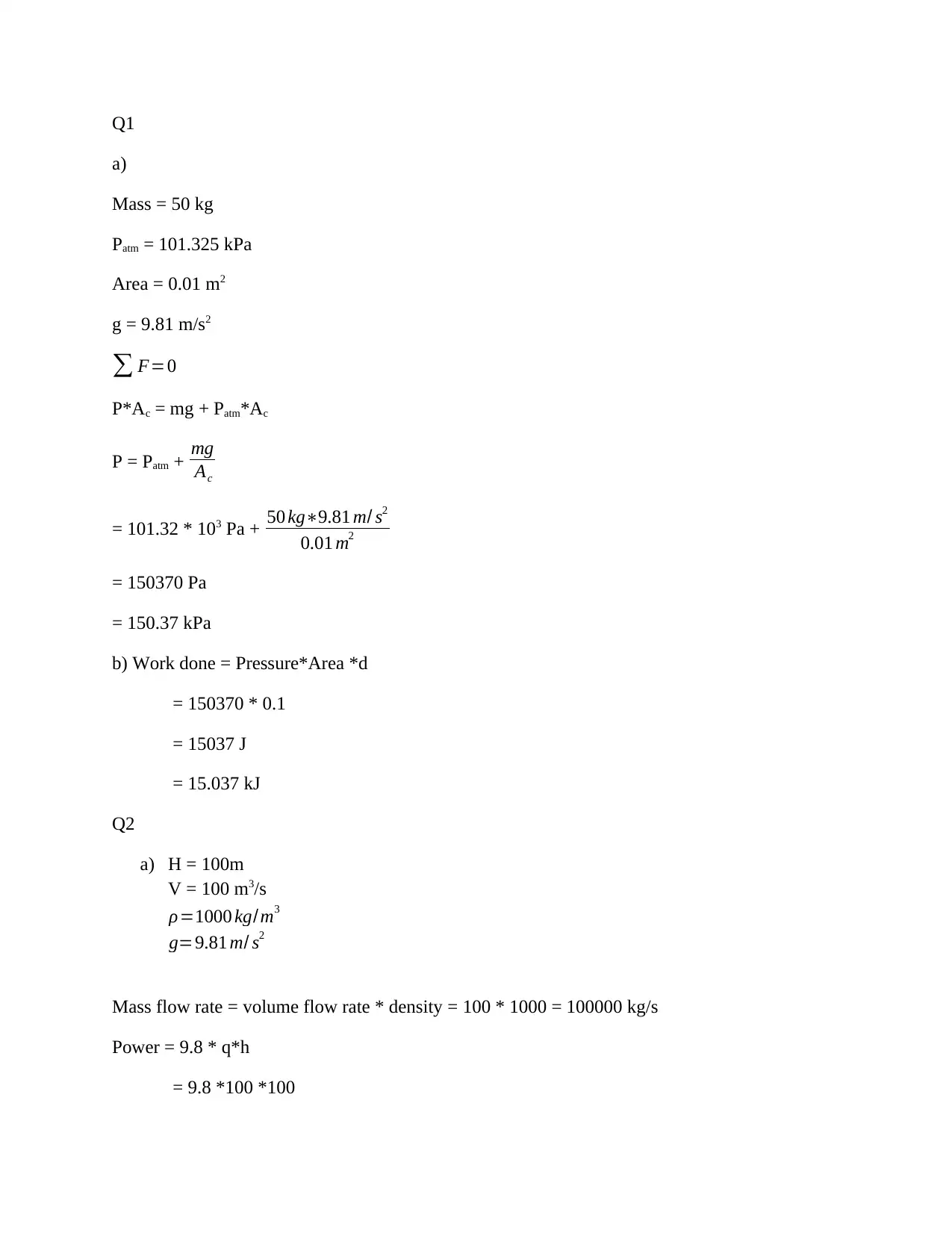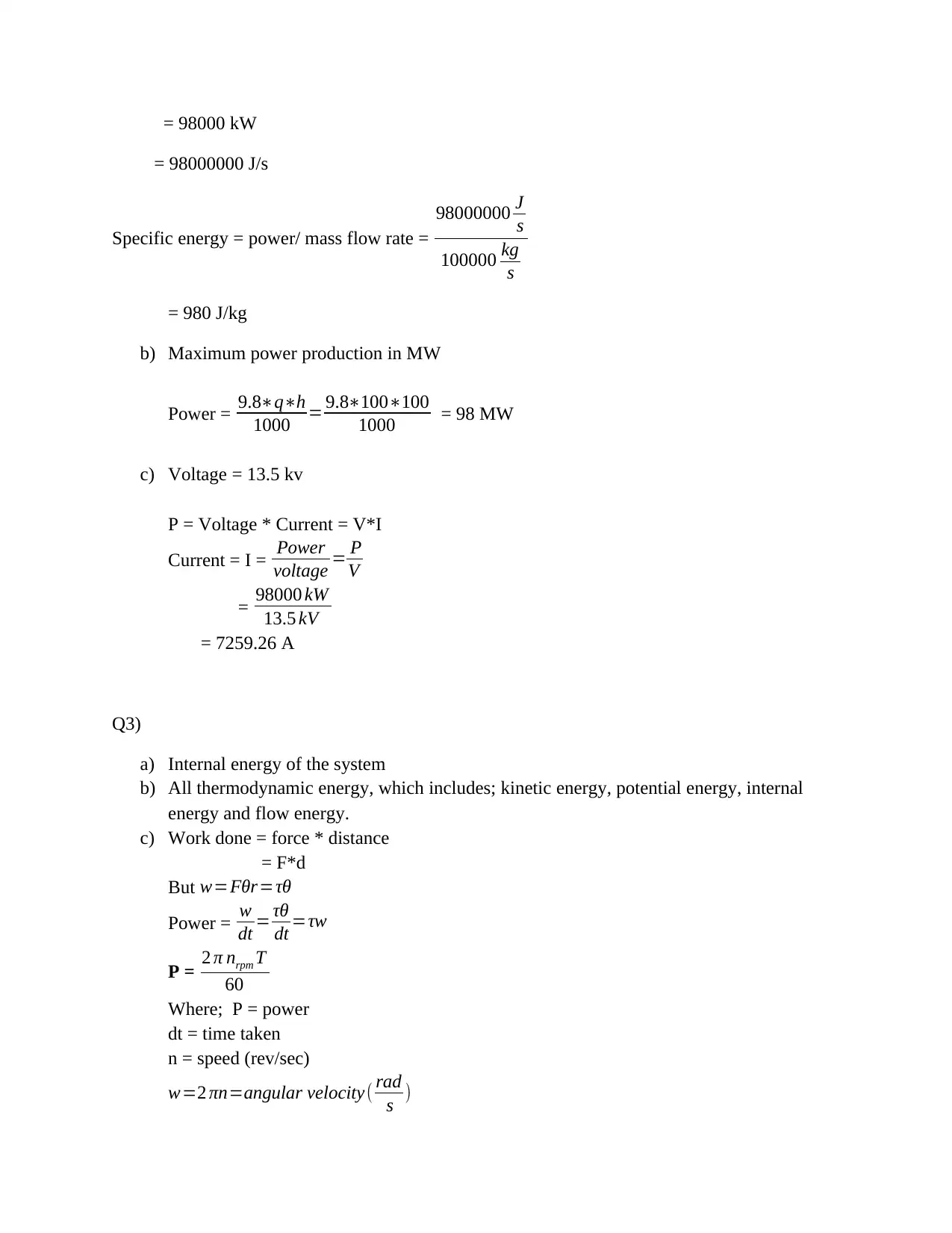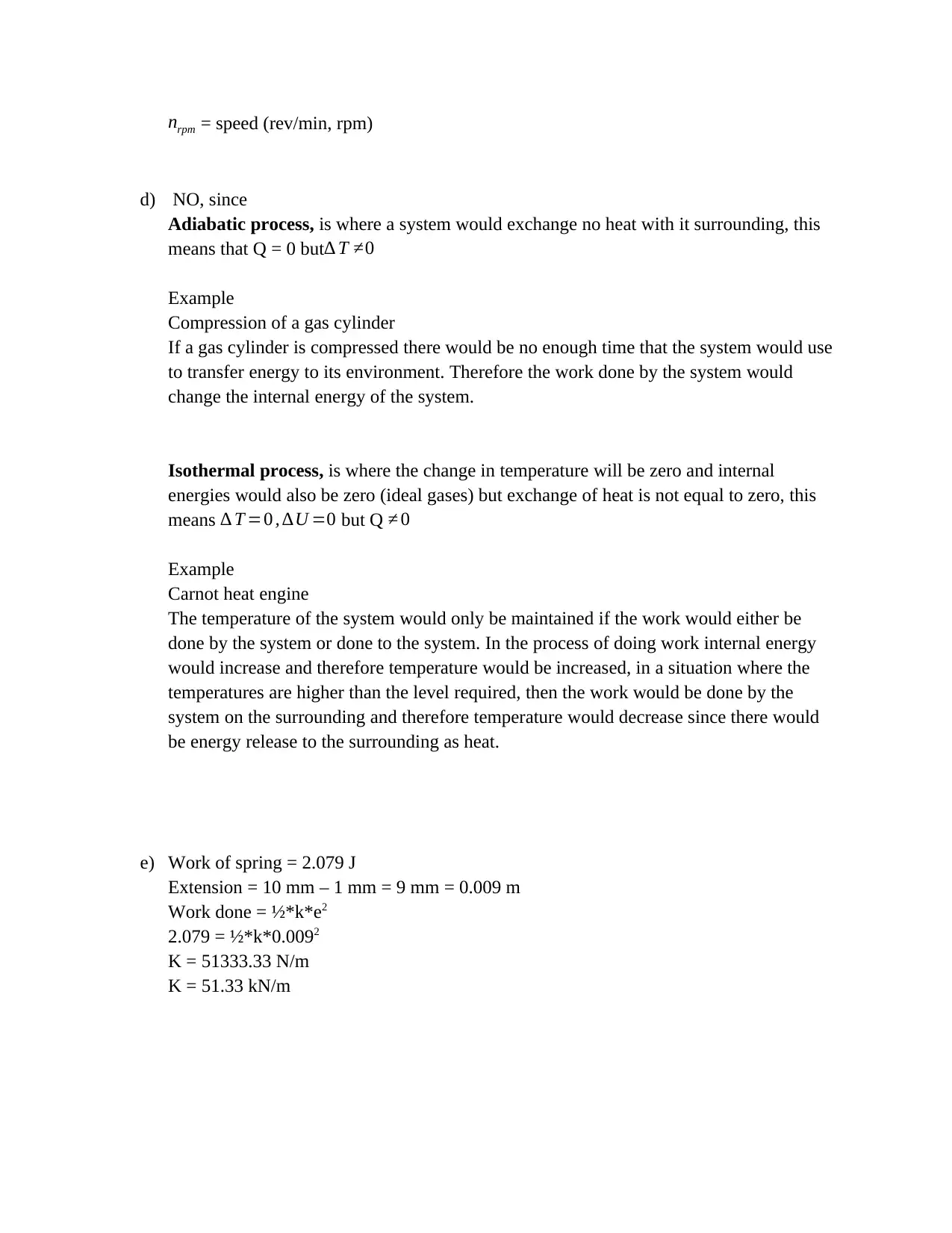MAE 204 Fall 2019 Homework #2: Thermodynamics Problems Solved
VerifiedAdded on 2022/11/18
|3
|450
|70
Homework Assignment
AI Summary
This document provides a complete solution to MAE 204 Fall 2019 Homework #2, a mechanical engineering assignment focused on thermodynamics. The solution covers three main problems: The first problem involves calculating the pressure at which a piston-cylinder assembly begins to rise and determining the work done by the gas as the piston rises. The second problem addresses power generation from a reservoir, calculating mass flow rate, power, specific energy, and maximum power production. The third problem explores the concept of internal energy within a system, differentiating between different types of energy and applying thermodynamic principles to isothermal and adiabatic processes, with an example calculation involving the work of a spring. This assignment showcases the application of fundamental thermodynamics principles to practical engineering problems.
1 out of 3










![[object Object]](/_next/static/media/star-bottom.7253800d.svg)